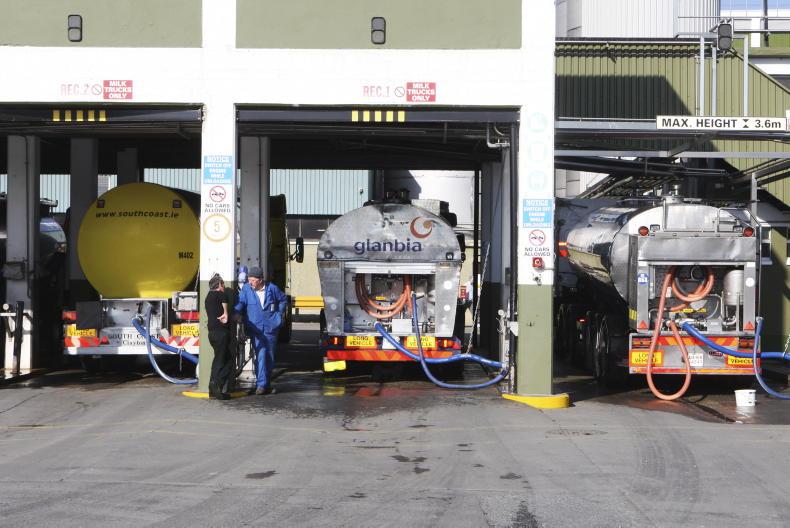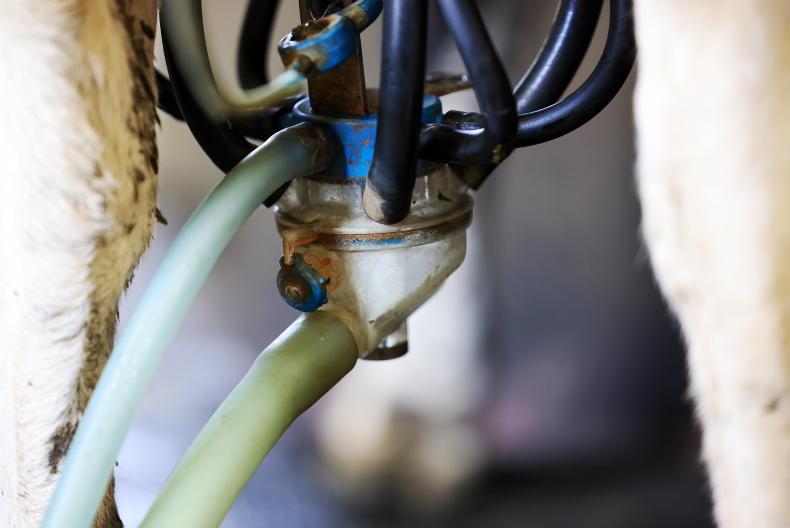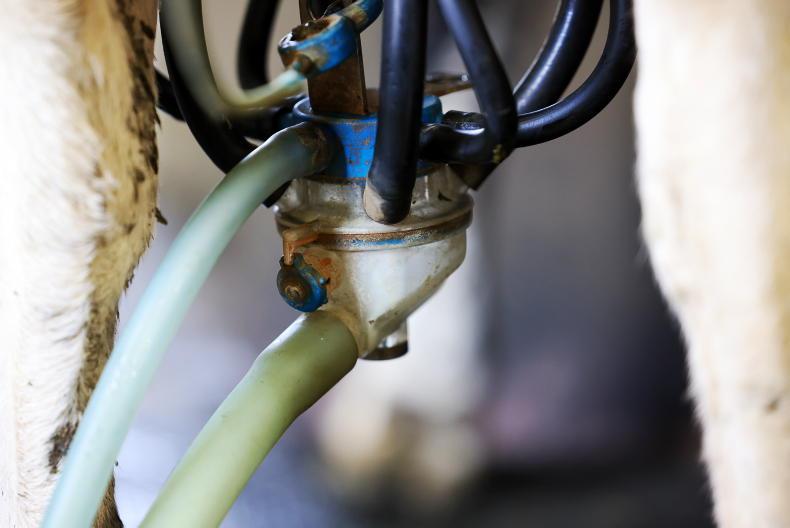Case study 1: Less than 80 cows
John is milking 60 cows. His son, Mark, is coming home from college and, together, they plan to milk 120 cows. Presuming they are currently producing 300,000l annually, they can now expand by 10% per year from their peak reference year. Prior to Monday’s change they could have milked 74 cows by 2024, the supposed last year of the restrictions.
After the changes announced this week they can now grow at 10% per year until they reach 400,000l and grow at 5% until they reach 550,000l and then grow at 2.5% compound growth thereafter.
Based on this faster growth trajectory, they can milk 84 cows by 2024 which is an increase of 10 cows compared to the Glanbia restrictions as first announced.
While smaller herds can increase at a faster rate, the actual number of extra cows that they can increase by is still quite small.
For example, a farmer with 250 cows growing at 2.5% per year can increase by more than a 60 cow farmer on a 10% growth curve.
Case study 2:
Voluntary
reduction scheme
Mary and Tom are dairy farmers in their sixties. They are milking 120 cows, producing 600,000l annually. None of their adult children are showing any interest in taking over the farm but they are not yet ready to retire. However, they find the workload is getting harder as they get older. Their reference peak supply is 240,000l. They plan to either reduce cow numbers to 100 or to go once-a-day (OAD) milking from 1 April until the end of the year.
Reducing cow numbers by 20 will reduce total annual milk sales by 100,000l which is worth €35,000 in milk sales and approximately €3,000 in annual stock sales. However, variable and fixed costs will also drop with less cows on the farm. According to Profit Monitor data, the average dairy farmer is retaining approximately 30% of turnover in the form of profit. Therefore, in this example, we can estimate that Mary and Tom make about €11,400 in profit from those 20 cows each year.
The reduction in cow numbers will mean that 40,000l less is produced at peak, so they can qualify for the voluntary reduction scheme and receive €4,000 for each of the three years 2022 to 2024. This reduces the annual loss to €7,400. They also have the proceeds from the sales of the 20 cows.
OAD
Approximately 88% of total annual milk supply is produced between 1 April and year-end. Going to OAD milking will reduce milk volume by 30% and reduce milk solids by 20%. If Mary and Tom decide to milk their 120 cows OAD from 1 April, they will reduce volume by 158,000l over the whole year but milk sales (milk solids) would decrease by 20% or by €37,000 per year.
The actual reduction in volume during the peak months would amount to 72,000l and for this they would receive €7,200 from the voluntary reduction scheme fund, meaning the net loss in income would be €29,800 from OAD milking from April onwards. However, it is likely that some cost savings could also be achieved from OAD milking, plus fertility performance should also improve as would quality of life for Mary and Tom.
The take-home message from this case study is that the voluntary reduction scheme will not generate extra profit for participating farmers, but it will cushion the loss in income from reducing milk supply.
Case study 1: Less than 80 cows
John is milking 60 cows. His son, Mark, is coming home from college and, together, they plan to milk 120 cows. Presuming they are currently producing 300,000l annually, they can now expand by 10% per year from their peak reference year. Prior to Monday’s change they could have milked 74 cows by 2024, the supposed last year of the restrictions.
After the changes announced this week they can now grow at 10% per year until they reach 400,000l and grow at 5% until they reach 550,000l and then grow at 2.5% compound growth thereafter.
Based on this faster growth trajectory, they can milk 84 cows by 2024 which is an increase of 10 cows compared to the Glanbia restrictions as first announced.
While smaller herds can increase at a faster rate, the actual number of extra cows that they can increase by is still quite small.
For example, a farmer with 250 cows growing at 2.5% per year can increase by more than a 60 cow farmer on a 10% growth curve.
Case study 2:
Voluntary
reduction scheme
Mary and Tom are dairy farmers in their sixties. They are milking 120 cows, producing 600,000l annually. None of their adult children are showing any interest in taking over the farm but they are not yet ready to retire. However, they find the workload is getting harder as they get older. Their reference peak supply is 240,000l. They plan to either reduce cow numbers to 100 or to go once-a-day (OAD) milking from 1 April until the end of the year.
Reducing cow numbers by 20 will reduce total annual milk sales by 100,000l which is worth €35,000 in milk sales and approximately €3,000 in annual stock sales. However, variable and fixed costs will also drop with less cows on the farm. According to Profit Monitor data, the average dairy farmer is retaining approximately 30% of turnover in the form of profit. Therefore, in this example, we can estimate that Mary and Tom make about €11,400 in profit from those 20 cows each year.
The reduction in cow numbers will mean that 40,000l less is produced at peak, so they can qualify for the voluntary reduction scheme and receive €4,000 for each of the three years 2022 to 2024. This reduces the annual loss to €7,400. They also have the proceeds from the sales of the 20 cows.
OAD
Approximately 88% of total annual milk supply is produced between 1 April and year-end. Going to OAD milking will reduce milk volume by 30% and reduce milk solids by 20%. If Mary and Tom decide to milk their 120 cows OAD from 1 April, they will reduce volume by 158,000l over the whole year but milk sales (milk solids) would decrease by 20% or by €37,000 per year.
The actual reduction in volume during the peak months would amount to 72,000l and for this they would receive €7,200 from the voluntary reduction scheme fund, meaning the net loss in income would be €29,800 from OAD milking from April onwards. However, it is likely that some cost savings could also be achieved from OAD milking, plus fertility performance should also improve as would quality of life for Mary and Tom.
The take-home message from this case study is that the voluntary reduction scheme will not generate extra profit for participating farmers, but it will cushion the loss in income from reducing milk supply.










SHARING OPTIONS